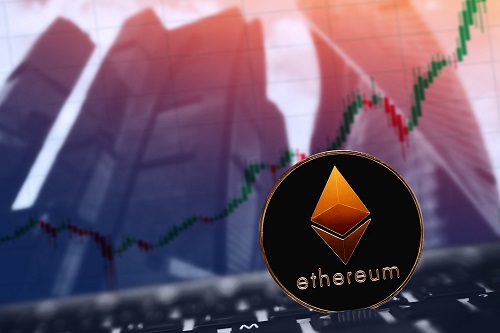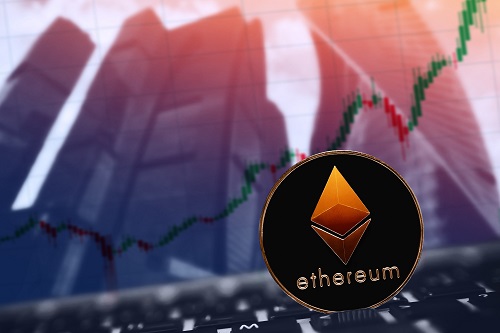Ethereum remains top dog, but woes persist in the DeFi sector

[ad_1]

Key Takeaways
DeFi has seen massive capital outflows in the last year as token prices have collapsed
Trad-fi yields have also spiked while DeFi yields have fallen
Ethereum has underperformed Bitcoin notably since the Merge
The third quarter of 2020 became known as “DeFi Summer” within crypto, such was the speed at which the nascent sector of decentralised finance took the industry by storm.
Fast forward three summers and it is safe to say that the 2023 edition will not be given the same moniker. After a torrid year in 2022, crypto has rebounded strongly thus far this year; however, DeFi has been left out in the cold, the summer sunshine nowhere to be seen.
The below chart shows the TVL across the space. From a peak of nearly $180 billion in November 2021, it currently sits at $40 billion, representing a drawdown of nearly 78%.
Ethereum remains the home of DeFi
Let’s dig into Ethereum specifically. The network has undergone some important milestones in the last year. The most meaningful was the Merge in September, which transitioned Ethereum to proof-of-stake from proof-of-work. This was then followed up with the Shapella upgrade in April, finally allowing all staked ETH to be withdrawn and closing the book on the biggest (and highly successful) network event since its launch in 2015.
Both before, during and after these changes, Ethereum has remained the king of DeFi with a chunky 57% of TVL in the space, Tron a distant second with 14%.
However, Ethereum has not been immune to the outflows which have ravaged DeFi. While market share has remained high, TVL itself has fallen akin to what has been seen across the ecosystem. It is also important to note that the previous outflow of TVL was described in dollar terms. This is despite the fact that much of the TVL in DeFi is denominated in non-fiat currencies, such as ETH itself or myriad ERC-20 tokens.
Hence, even if no withdrawals took place, the TVL in dollar terms would have plummeted by virtue of crypto prices cascading downwards last year. Even after the bounceback in 2023, Ether is currently trading at $1,800, 63% off its all-time high. Yet displaying the withdrawals in terms of Ether below shows that the downward trend is visible regardless of denomination.
This begs the question, why? Well, the obvious answers are plenty. Namely, crypto has been put through the wringer over the past couple of years, from Terra to FTX to the SEC and everything in between. While many of the transgressions have centred on CeFi rather than DeFi – indeed, one could argue that DeFi performed exactly as it meant to do (Terra aside…) – crypto has been hurt immensely overall, nobody spared.
Having said that, DeFi has recently suffered a little bit of a wobble…
The deadline for the CRV/ETH exploiter passeshttps://t.co/VphQ0bfYr2 pic.twitter.com/x8LP9Tx4rs
— Curve Finance (@CurveFinance) August 6, 2023
Although the reasons for capital flight run deeper than crypto. The macro environment has flipped to a staggering degree. Following years of uber-low interest rates, the Federal Reserve was forced into a series of relentless interest rate hikes as inflation spiralled. While it has begun to come down and the market has bounced off the hope that we are nearing the end of the cycle, DeFi has been squarely caught in the crossfire.
Not only do higher interest rates suck liquidity out of the economy and cause investors to retreat back on the risk curve, hence crashing crypto prices, but they also offer investors an alternative method of earning yield.
We are now in a situation where the Fed funds rate is above 5%, having been close to zero only eighteen months ago. At the same time, yields that were previously sky-high within crypto have proven unsustainable as token prices have dropped, meaning that DeFi yields have collapsed while trad-fi yields have soared. It’s not a surprise, therefore, to see capital flow out at such a scale.
Positive signs remain
This is all rather negative, but there is light amid the darkness. Ethereum has fared far better than many of its rivals. Take Solana, once deemed the most notorious “ETH-killer”, its associations with Bankman-Fried, repeated outages and various other struggles ultimately kneecapped it to the tune of a 97% peak-to-trough decline (it remains 91% off its all-time high). While Solana is the most glaring example, Ether has been resilient by comparison to many of its rivals.
Additionally, the aforementioned Merge came and went smoothly, a phenomenal undertaking by the developers and a win for the community at large. Adding in the recent slew of applications for an Ether futures ETF and, if the regulatory climate finally starts to clear up, there could be more reasons to be optimistic for DeFi and Ethereum.
However, there is no denying that it has been an eye-opening period for many in the DeFi space, some of whom speculated that Ether would flip Bitcoin as the world’s largest cryptocurrency by market cap. Quite the contrary. In fact, Ethereum has underperformed Bitcoin immensely since the Merge last September, notable despite the crypto market trending upwards since Q4.
A market heading north has generally meant that Bitcoin underperforms, however the precedent has been different this time, as discussed here (in short, regulation driving a wedge between Bitcoin and the rest of the market, the spot ETF applications, the scale of the damage within crypto, and the fact that we tend to draw far too much from past performance in a sector that has so little data to work with).
Unquestionably, it has been the toughest year in DeFi’s brief existence so far. And yet, Ethereum trucks on, eagerly striving to tokenise real world assets and start generating real world value. Its place at the top among the smart contract blockchains appears secured. It just needs to hope DeFi makes a comeback, and that the summer of 2020 was not a once-off event. Time will tell.
[ad_2]
Source link
